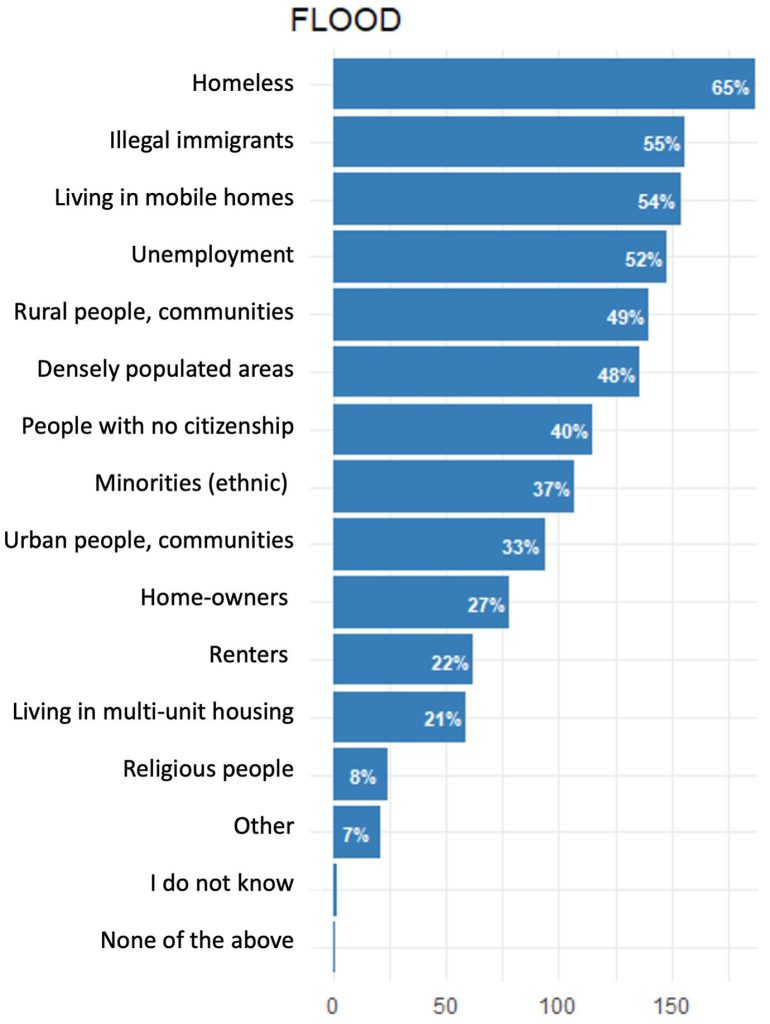Land tenure is the relationship, whether legally or customarily defined, among people, as individuals or groups, with respect to land. Rules of tenure define how property rights to land are to be allocated within societies. Ownership can significantly influence the level of control a resident has over the adoption of protective measures and access to post-Disaster assistance. Property status leads to differences in Vulnerability to floods among property owners, tenants, squatters, and the homeless, also being linked to individuals’ social status. Social vulnerabilities among property ownership classes also vary depending on the Disaster phase: a member of a given property ownership class may be vulnerable during one Disaster phase but not during another.
Property Owners: Before a flood, property owners have demonstrated higher awareness of flood risks, better understanding of warnings, immediate measures to reduce damages, and a lower likelihood of seeking emergency shelter. In response to floods, property owners were also more inclined to make structural improvements to reduce losses from future floods.
Tenants: Compared to property owners, tenants have been associated with higher flood levels, more adverse health effects, higher rates of displacement and job loss, but lower economic losses. Tenants experienced more health effects and stress than property owners at the time of the flood and remained dependent on property owners during the recovery and reconstruction process but also when preparing for Disaster by implementing protection measures at the household scale to increase their Resilience. Indeed, researchers and experts have been reporting that a lack of technical measures installed against hazards can participate in making people more vulnerable (cf. Image 2). In the aftermath of floods, tenants had lower return rates than property owners.
➔ Example “Property Owners” AND “Tenants”: In Geraardsbergen (Belgium), authorities offer residents the opportunity to install individual protections on their homes. However, this is only possible if residents own their homes and have the means to finance the installations.
Precarious Housing and Homelessness: Apart from ownership and tenancy, other specific types of housing exist. For instance, precarious housing types, particularly fragile dwellings, or individuals experiencing homelessness, are particularly vulnerable to floods.
➔ Example “Precarious Housing and Homelessness”: In the Helsinki region (Finland), 2000 people are homeless, requiring specific measures during floods.
According to experts and researchers in Disaster Risk, homelessness contributes to oneself Vulnerability more than an ownership or renting status do (cf. Image 4). Hence, reducing vulnerabilities linked to land tenure could start by implementing measures in favor of more Equity for the homelessness.
Want to go further?

